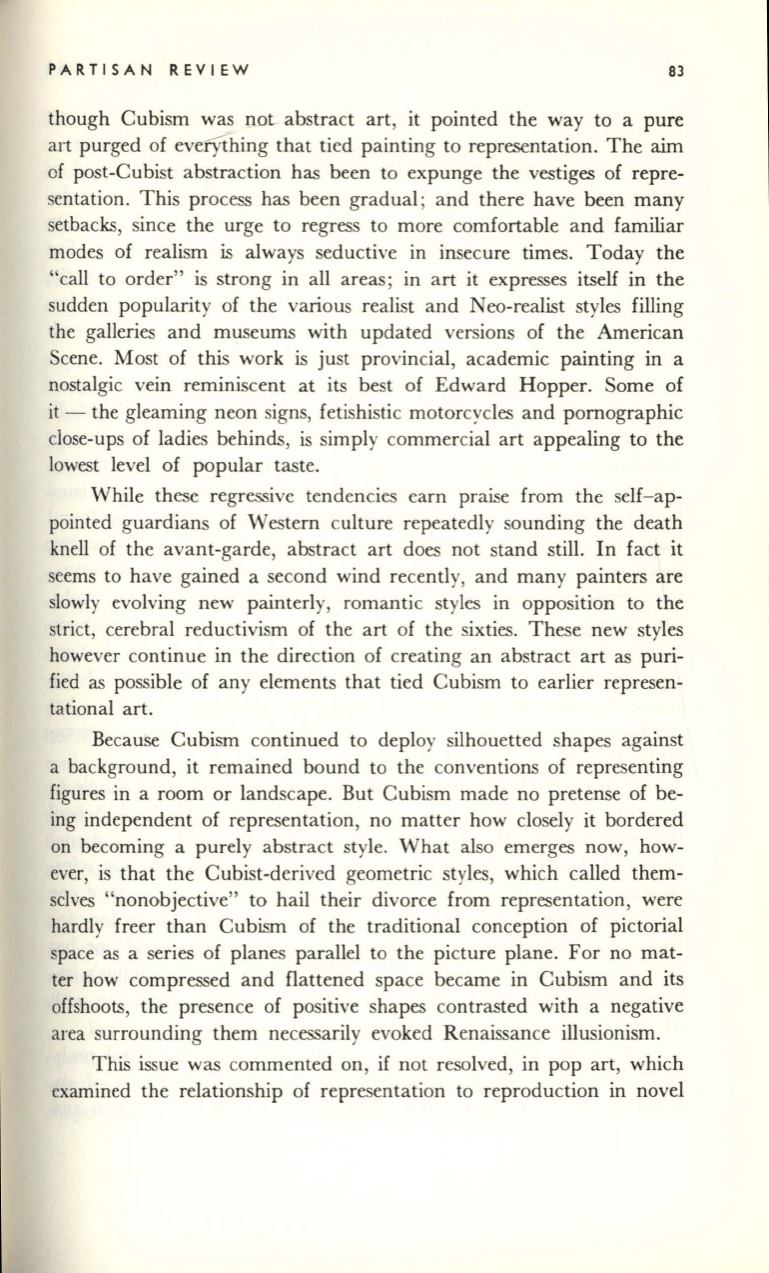
PARTISAN REVIEW
83
though Cubism was not abstract art, it pointed the way to a pure
art purged of everything that tied painting to representation. The
aim
of post-Cubist abstraction has been to expunge the vestiges of repre–
sentation. This process has been gradual; and there have been many
setbacks, since the urge to regress to more comfortable and familiar
modes of realism is always seductive in insecure times. Today the
"call to order" is strong in all areas; in art it expresses itself in the
sudden popularity of the various realist and Neo-realist styles filling
the galleries and museums with updated versions of the American
Scene. Most of this work is just provincial, academic painting in a
nostalgic vein reminiscent at its best of Edward Hopper. Some of
it - the gleaming neon signs, fetishisti c motorcycles and pornographic
close-ups of ladies behinds, is simply commercial art appealing to the
lowest level of popular taste.
While these regressive tendencies earn praise from the self-ap–
pointed guardians of Western culture repeatedly sounding the death
knell of the avant-garde, abstract art does not stand still. In fact it
seems to have gained a second wind recently, and many painters are
slowly evolving new painterly, romantic styles in opposition to the
strict, cerebral reductivism of the art of the sixties. These new styles
however continue in the direction of creating an abstract art as puri–
fied as possible of any elements that tied Cubism to earlier represen–
tational art.
Because Cubism continued to deploy silhouetted shapes against
a background, it remained bound to the conventions of representing
figures in a room or landscape. But Cubism made no pretense of be–
ing independent of representation, no matter how closely it bordered
on becoming a purely abstract style. What also emerges now, how–
ever, is that the Cubist-derived geometric styles, which called them–
selves "nonobjective" to hail their divorce from representation, were
hardly freer than Cubism of the traditional conception of pictorial
space as a series of planes parallel to the picture plane. For no mat–
ter how compressed and flattened space became in Cubism and its
offshoots, the presence of positive shapes contrasted with a negative
area surrounding them necessarily evoked Renaissance illusionism.
This issue was commented on, if not resolved, in pop art, which
examined the relationship of representation to reproduction in novel


